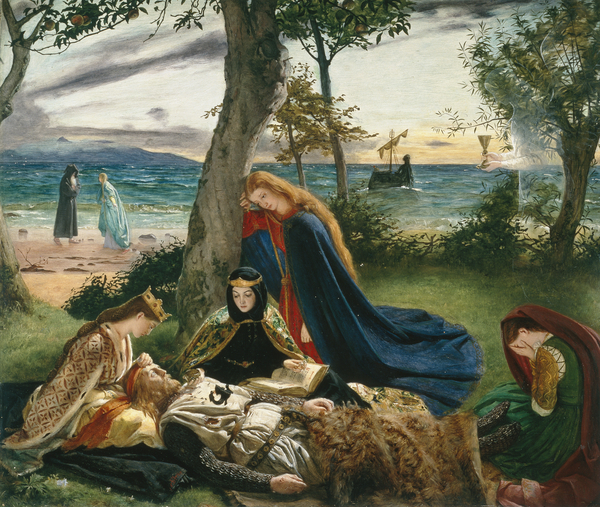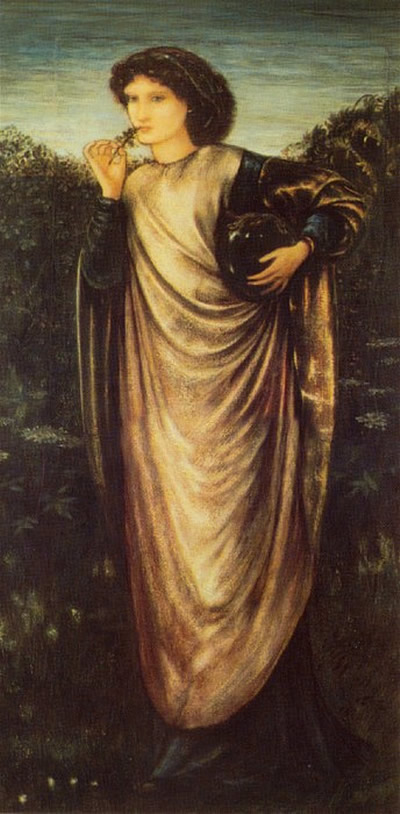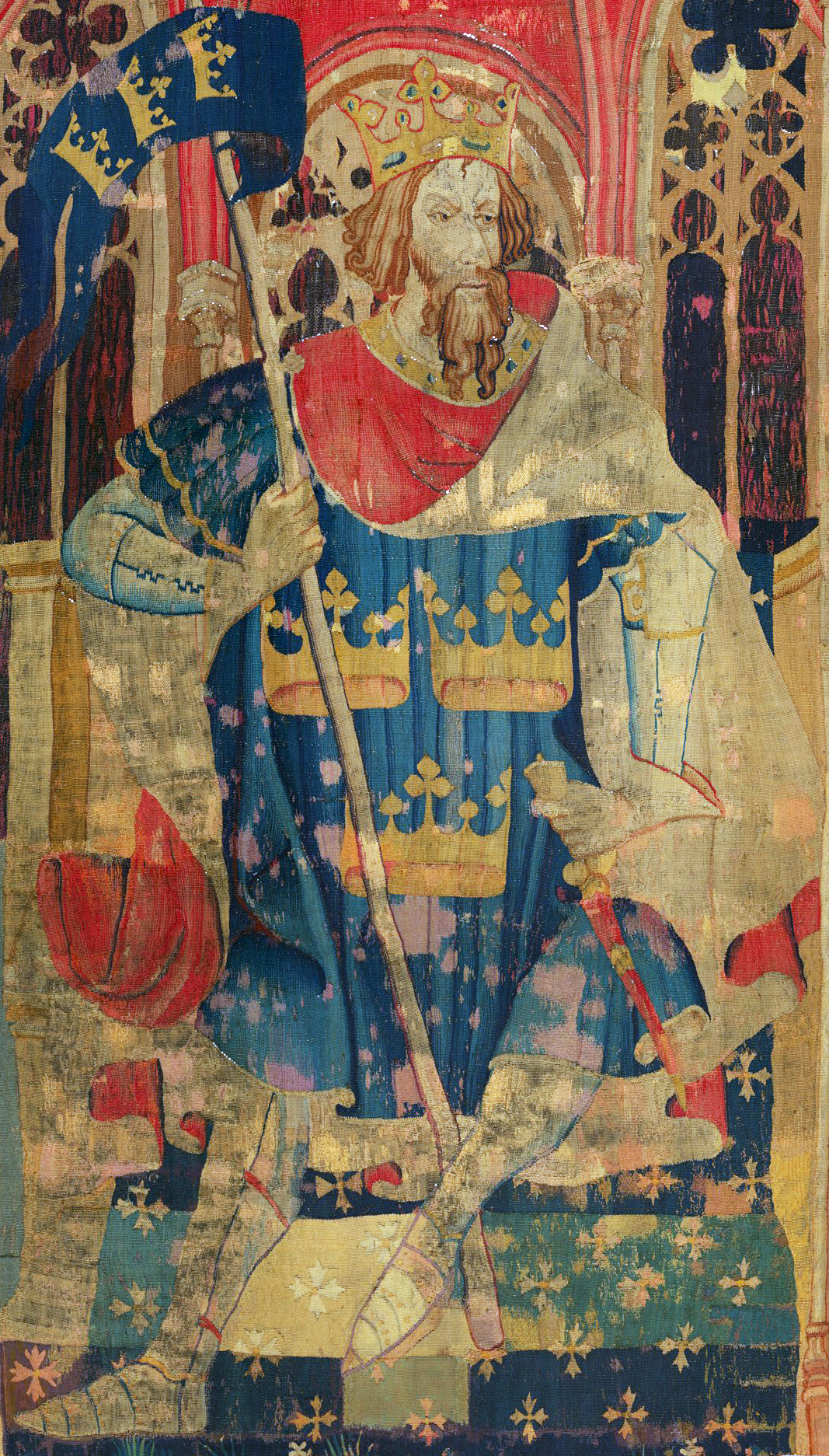|
Avalon
Avalon () is an island featured in the Arthurian legend. It first appeared in Geoffrey of Monmouth's 1136 ''Historia Regum Britanniae'' as a place of magic where King Arthur's sword Excalibur was made and later where Arthur was taken to recover from being gravely wounded at the Battle of Camlann. Since then, the island has become a symbol of Arthurian mythology, similar to Arthur's castle of Camelot. Avalon was associated from an early date with mystical practices and magical figures such as King Arthur's sorceress sister Morgan, cast as the island's ruler by Geoffrey and many later authors. Certain Briton traditions have maintained that Arthur is an eternal king who had never truly died but would return as the "once and future" king. The particular motif of his rest in Morgan's care in Avalon has become especially popular. It can be found in various versions in many French and other medieval Arthurian and other works written in the wake of Geoffrey, some of them also linkin ... [...More Info...] [...Related Items...] OR: [Wikipedia] [Google] [Baidu] |
Morgan Le Fay
Morgan le Fay (; Welsh language, Welsh and Cornish language, Cornish: Morgen; with ''le Fay'' being garbled French language, French ''la Fée'', thus meaning 'Morgan the Fairy'), alternatively known as Morgan[n]a, Morgain[a/e], Morgant[e], Morg[a]ne, Morgayn[e], Morgein[e], and Morgue[in] among other names and spellings, is a powerful and ambiguous Magician (fantasy), enchantress from the legend of King Arthur, in which most often she and he are siblings. Early appearances of Morgan in Arthurian literature do not elaborate her character beyond her role as a goddess, a fairy , fay, a Witchcraft , witch, or a sorceress, generally benevolent and connected to Arthur as his magical saviour and protector. Her prominence increased as the legend of Arthur developed over time, as did her moral ambivalence, and in some texts there is an evolutionary transformation of her to an antagonist, particularly as portrayed in cyclical prose such as the ''Lancelot-Grail'' and the Post-Vulgate Cyc ... [...More Info...] [...Related Items...] OR: [Wikipedia] [Google] [Baidu] |
Lady Of The Lake
The Lady of the Lake (, , , , ) is a title used by multiple characters in the Matter of Britain, the body of medieval literature and mythology associated with the legend of King Arthur. As either actually fairy or fairy-like yet human enchantresses, they play important roles in various stories, notably by providing Arthur with the sword Excalibur, eliminating the wizard Merlin, raising the knight Lancelot after the death of King Ban, his father, and helping to take the dying Arthur to Avalon after Battle of Camlann, his final battle. Different Ladies of the Lake appear concurrently as separate characters in some versions of the legend since at least the Post-Vulgate Cycle and consequently the seminal ''Le Morte d'Arthur'', with the latter describing them as members of a hierarchical group, while some texts also give this title to either Morgan le Fay, Morgan or Morgause, her sister. Names and origins Today, the Lady of the Lake is best known as the character called either Nimue ... [...More Info...] [...Related Items...] OR: [Wikipedia] [Google] [Baidu] |
King Arthur
According to legends, King Arthur (; ; ; ) was a king of Great Britain, Britain. He is a folk hero and a central figure in the medieval literary tradition known as the Matter of Britain. In Wales, Welsh sources, Arthur is portrayed as a leader of the Sub-Roman Britain, post-Roman Britons in battles against the Anglo-Saxons in the late-5th and early-6th centuries. He first appears in two early medieval historical sources, the ''Annales Cambriae'' and the ''Historia Brittonum'', but these date to 300 years after he is supposed to have lived, and most historians who study the period Historicity of King Arthur, do not consider him a historical figure.Tom Shippey, "So Much Smoke", ''review'' of , ''London Review of Books'', 40:24:23 (20 December 2018) His name also occurs in early Welsh-language literature, Welsh poetic sources, such as ''Y Gododdin''. The character developed through Welsh mythology, appearing either as a great warrior defending Britain from human and supernatura ... [...More Info...] [...Related Items...] OR: [Wikipedia] [Google] [Baidu] |
Glastonbury Tor
Glastonbury Tor is a hill near Glastonbury in the English county of Somerset, topped by the roofless tower of St Michael's Church, a Grade I Listed building (United Kingdom), listed building. The site is managed by the National Trust and has been designated a scheduled monument. The Tor is mentioned in Welsh mythology, particularly in myths linked to King Arthur, and has several other enduring mythological and spiritual associations. The conical hill of clay and Blue Lias rises from the Somerset Levels. It was formed when surrounding softer deposits were eroded, leaving a hard cap of sandstone exposed. The slopes of the hill are terraced, but the method by which they were formed remains unexplained. Archaeological excavations during the 20th century sought to clarify the background of the monument and church, but some aspects of their history remain unexplained. Artefacts from human visitation have been found, dating from the Iron Age to Roman eras. Several buildings were const ... [...More Info...] [...Related Items...] OR: [Wikipedia] [Google] [Baidu] |
Battle Of Camlann
The Battle of Camlann ( or ''Brwydr Camlan'') is the legendary final battle of King Arthur, in which Arthur either died or was mortally wounded while fighting either alongside or against Mordred, who also perished. The original legend of Camlann, inspired by a purportedly historical event said to have taken place in the early 6th-century Britain, is only vaguely described in several medieval Welsh texts dating from around the 10th century. The battle's much more detailed depictions have emerged since the 12th century, generally based on that of a catastrophic conflict described in the pseudo-chronicle ''Historia Regum Britanniae''. The further greatly embellished variants originate from the later French chivalric romance tradition, in which it became known as the Battle of Salisbury, and include the 15th-century telling in '' Le Morte d'Arthur'' that remains popular today. Etymology The name may derive from a Brittonic ''*Cambo-landa'' ("crooked/twisting-enclosure" or "crook ... [...More Info...] [...Related Items...] OR: [Wikipedia] [Google] [Baidu] |
The Last Sleep Of Arthur In Avalon
''The Last Sleep of Arthur in Avalon'' is a painting by the English artist Edward Burne-Jones, started in 1881. The massive painting measures 279 cm × 650 cm, and is widely considered to be Burne-Jones's ''Masterpiece, magnum opus''.Waters, p. 42. The painting was originally commissioned from Burne-Jones by his patron George Howard, 9th Earl of Carlisle, to hang on a wall in the library of Naworth Castle. Howard shared Burne-Jones's affection for the King Arthur, Arthurian legend and left the choice of topic to the artist.Mancoff, p. 118. Burne-Jones started working on it in 1881 and continued for 17 years. Within this period, he also designed the stage set for the play ''King Arthur'' by J. Comyns Carr that premiered in London in January 1895.Wildman, p. 315. The 1880s brought the deaths of Burne-Jones's close friends. As they died, the artist experienced mounting isolation and painful awareness of his own mortality.Mancoff, p. 113. Immersed in his work, Burne-Jones i ... [...More Info...] [...Related Items...] OR: [Wikipedia] [Google] [Baidu] |
Vita Merlini
, or ''The Life of Merlin'', is a Latin poem in 1,529 hexameter lines written around the year 1150. Though doubts have in the past been raised about its authorship it is now widely believed to be by Geoffrey of Monmouth. It tells the story of Merlin's madness, his life as a wild man of the woods, and his prophecies and conversations with his sister, Ganieda, and the poet Taliesin. Its plot derives from previous Celtic legends of early Middle Welsh origin, traditions of the bard Myrddin Wyllt and the wild man Lailoken, and it includes an important early account of King Arthur's final journey to Avalon, but it also displays much pseudo-scientific learning drawn from earlier scholarly Latin authors. Though its popularity was never remotely comparable to that of Geoffrey's , it did have a noticeable influence on medieval Arthurian romance, and has been drawn on by modern writers such as Laurence Binyon and Mary Stewart. Synopsis The author briefly addresses the dedicatee of th ... [...More Info...] [...Related Items...] OR: [Wikipedia] [Google] [Baidu] |
Edward Burne-Jones
Sir Edward Coley Burne-Jones, 1st Baronet, (; 28 August 183317 June 1898) was an English painter and designer associated with the Pre-Raphaelite Brotherhood's style and subject matter. Burne-Jones worked with William Morris as a founding partner in Morris & Co., Morris, Marshall, Faulkner & Co in the design of decorative arts. His early paintings show the influence of Dante Gabriel Rossetti, but by 1870 he had developed his own style. In 1877, he exhibited eight oil paintings at the Grosvenor Gallery, a new rival to the Royal Academy of Arts. These included ''The Beguiling of Merlin''. The timing was right and he was taken up as a herald and star of the new Aesthetic Movement. In the studio of Morris and Co. Burne-Jones worked as a designer of a wide range of crafts including ceramic tiles, jewellery, tapestry, tapestries, and mosaics. Among his most significant and lasting designs are those for stained glass windows the production of which was a revived craft during the 19th ... [...More Info...] [...Related Items...] OR: [Wikipedia] [Google] [Baidu] |
Excalibur
Excalibur is the mythical sword of King Arthur that may possess magical powers or be associated with the rightful sovereignty of Britain. Its first reliably datable appearance is found in Geoffrey of Monmouth's ''Historia Regum Britanniae''. Excalibur as the "sword in the stone" functioning as the proof of Arthur's lineage is an iconic motif featured throughout most works dealing with Arthur's youth since its introduction in Robert de Boron's ''Merlin''. The sword given to the young Arthur by the Lady of the Lake in the tradition that began soon afterwards with the '' Post-Vulgate Cycle'' is not the same weapon, but in '' Le Morte d'Arthur'' both of them share the name of Excalibur. Several similar swords and other weapons also appear within Arthurian texts, as well as in other legends. Forms and etymology The name ''Excalibur'' ultimately derives from the Welsh ( Breton , Middle Cornish ), which is a compound of , , and , . Caledfwlch appears in several early Welsh wo ... [...More Info...] [...Related Items...] OR: [Wikipedia] [Google] [Baidu] |
King Arthur's Messianic Return
King Arthur's messianic return is a mythological motif in the legend of King Arthur, which claims that he will one day return in the role of a messiah to save his people. It is an example of the king asleep in mountain motif. King Arthur was a legendary 6th-century Welsh king. Few historical records of Arthur remain, and there are doubts that he ever existed, but he achieved a mythological status by High Middle Ages that gave rise to a growing literature about his life and deeds. Origins The possibility of Arthur's return is first mentioned by William of Malmesbury in 1125: "But Arthur's grave is nowhere seen, whence antiquity of fables still claims that he will return." In the "Miracles of St. Mary of Laon" ('' De miraculis sanctae Mariae Laudunensis''), written by a French cleric and chronicler named Hériman of Tournai in c. 1145, but referring to events that occurred in 1113, mention is made of the Breton and Cornish belief that Arthur still lived. As Constance Bullock ... [...More Info...] [...Related Items...] OR: [Wikipedia] [Google] [Baidu] |
Fata Morgana (mirage)
A () is a complex form of Mirage#Superior mirage, superior mirage visible in a narrow band right above the horizon. The term ''Fata Morgana'' is the Italian translation of "Morgan the Fairy" (Morgan le Fay of Arthurian legend). These mirages are often seen in the Italian Strait of Messina, and were described as fairy castles in the air or false land conjured by her magic. Fata Morgana mirages significantly distort the object or objects on which they are based, often such that the object is completely unrecognizable. A Fata Morgana may be seen at sea or on land, in polar regions, or in deserts. It may involve almost any kind of distant object, including boats, islands, and the coastline. Often, a Fata Morgana changes rapidly. The mirage comprises several inverted (upside down) and upright images stacked on top of one another. Fata Morgana mirages also show alternating compressed and stretched zones. [...More Info...] [...Related Items...] OR: [Wikipedia] [Google] [Baidu] |
Nine Sorceresses
The nine sorceresses or nine sisters () are a recurring element in Arthurian legend in variants of the popular nine maidens theme from world mythologies. Their most important appearances are in Geoffrey of Monmouth's introduction of Avalon and the character that would later become Morgan le Fay, and as the central motif of Peredur's story in the '' Peredur son of Efrawg'' part of the ''Mabinogion''. The maidens of Annwfn and the witches of Ystawingun In '' Preiddeu Annwfn'', the nine virgin priestesses of the otherworldy island of Annwfn ( Annwn, the Welsh version of the Celtic Otherworld) guard a magic cauldron, and their magic abilities seem to include fire-breathing. A raid by Arthur and his warband either steals or destroys the cauldron, but what happens to the maidens of Annwfn is not mentioned. The motif of nine supernatural women appears also in some other tales of the Celtic Otherworld, possibly derived from sisterhoods of priestesses of the old Celtic Religion. ... [...More Info...] [...Related Items...] OR: [Wikipedia] [Google] [Baidu] |









